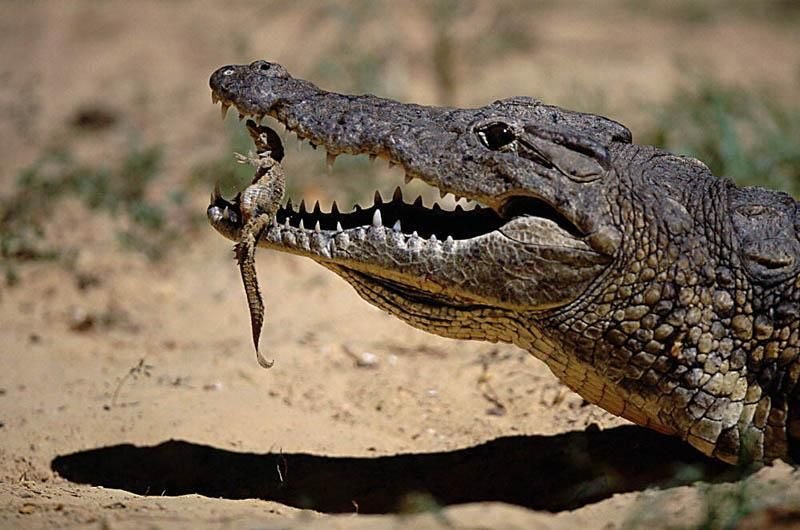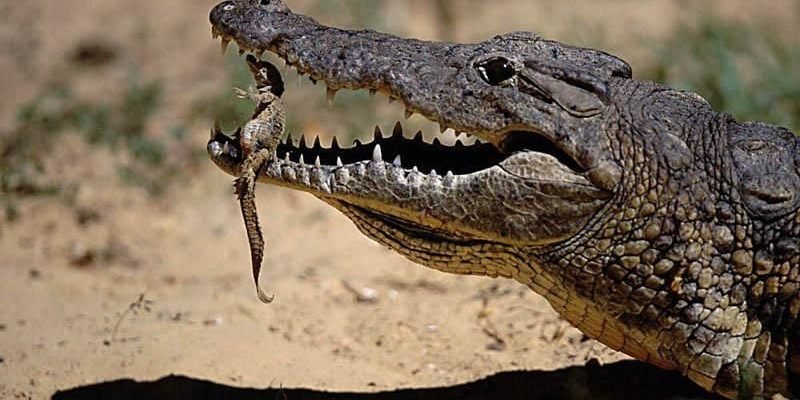
Think of them as the *baby boomers* of the reptile world. After laying eggs, Nile crocodiles transition from solitary hunters to doting parents, showcasing a level of care that might just surprise you. Their parenting strategy is a wild mix of instincts and protective behaviors that ensure their hatchlings have a fighting chance in a tough environment. Let’s dive deeper into this fascinating aspect of crocodile life!
The Nesting Process: Where It All Begins
One of the first steps in raising young Nile crocodiles is the nesting process. This happens during the warmer months when females look for a suitable spot to lay their eggs. They usually opt for sandy or muddy banks near freshwater habitats. Here’s where the magic happens:
- Building the Nest: A female Nile crocodile will dig a nest using her powerful tail. It’s like a cozy cradle for her future offspring. She can lay anywhere from 25 to 80 eggs!
- Temperature Matters: The temperature of the nest is crucial. Warmer areas lead to more males, while cooler spots produce females. It’s an interesting way for nature to balance its populations.
- Protective Mother: After laying her eggs, the female remains nearby for weeks, guarding her nest fiercely against predators. Imagine a lioness in her den; that’s the level of vigilance we’re talking about!
The time spent in the nest can vary, but generally, the eggs will incubate for about 70 to 90 days. During this time, the mother may move a little away but is always on the lookout. She’ll even cover the nest with mud to keep it hidden from hungry animals.
Hatching: The Big Moment
Once incubation is complete, it’s time for the little ones to break free. Hatching is an exciting and critical moment in the crocodile life cycle. Here’s how it goes down:
1. Cue the Sounds: As the eggs start to hatch, the hatchlings make a series of high-pitched calls from inside the shell. This is their way of signaling to their mother that they’re ready to come out. Think of it as a tiny croc concert!
2. Mom’s Assistance: Here’s the thing: the mother crocodile helps her hatchlings by gently cracking open the eggs with her powerful jaws. It’s pretty sweet, considering she could easily munch down on them.
3. First Swim: After they emerge, the mother helps guide her tiny babies to the water. This is crucial because they need to learn how to swim and hunt. She carries them in her mouth or even gently nudges them along—a protective ride to their new life.
Protection and Guidance in the Early Days
Once the hatchlings are out in the wild, their mother stays close. Here’s why that’s important:
– Safety First: Young crocodiles are vulnerable to a range of threats, including birds, larger fish, and even other crocodiles. A mother croc will guard her babies fiercely, often chasing away potential predators.
– Learning to Hunt: Under her watchful eye, the hatchlings begin to learn how to catch small fish and insects. Mom doesn’t just stand by; she catches food and offers it to her young, teaching them the ropes of being a successful predator.
– Social Interactions: Believe it or not, young Nile crocodiles have social structures. They may play and interact with each other, learning vital skills and building bonds—much like you’d see in other young animals.
Nile crocodile mothers can often be seen with their offspring resting on their backs or snouts, creating a sort of miniature crocodile parade as they glide through the water together. It’s a heartwarming sight that contrasts starkly with their fearsome reputation.
The Role of Sibling Rivalry
You might be wondering if there’s competition among the young crocs. Well, there is! Surprisingly, sibling rivalry plays a role in their development. Here’s what happens:
– Natural Selection: The biggest and strongest hatchlings may push smaller siblings aside during feeding, thus ensuring that only the best chances of survival remain. This might sound harsh, but it’s nature’s way of weeding out the weakest links.
– Skill Development: Those who survive the initial months often develop essential skills faster. They learn how to be more cunning and strategic in their movements, gradually turning into formidable predators as they grow.
– Bonding Through Conflict: Interestingly, this competition can also foster bonds. Siblings that fared well might help each other out during hunts, teaching younger or weaker siblings how to improve their skills.
Challenges in the Wild
Despite the mother’s best efforts, young Nile crocodiles face numerous challenges. Here’s a breakdown of what they encounter:
– Environmental Threats: Changes in climate, such as drought or flooding, can impact food sources and habitat. This can lead to higher mortality rates among young crocs.
– Predators: As mentioned earlier, many animals view hatchlings as a tasty snack. Even larger members of their species might be a threat, leading to a precarious existence.
– Human Impact: Pollution and habitat destruction due to human activities further complicate things. Nile crocodiles are facing challenges like reduced nesting areas and access to clean water, which directly impacts hatching success.
It’s a tough world out there, and while Nile crocodile mothers do their best, they can’t control everything.
The Lifelong Bond: From Hatchlings to Independence
As the young crocs grow, they begin to separate from their mother and become independent. This transition isn’t sudden; it’s a gradual process:
1. Exploration: After a few months, the young crocodiles become more adventurous. They start to swim further away and explore new territories while still keeping an eye out for their mother.
2. Learning and Adaptation: Over time, they refine their hunting skills and learn to fend for themselves. This is where the lessons from their mother become invaluable. They adapt to their environment, learning where to find the best food and how to avoid dangers.
3. Mother’s Departure: Eventually, the mother crocodile will stop protecting her young. The offspring must now rely on what they’ve learned to survive. While they may return to her nest during periods of danger, they’ve entered the next phase of their life as independent adults.
While the relationship between Nile crocodile mothers and their young is rooted in instinct, it brings a level of nurturing and care that’s often overlooked. Through the twists and turns of nature, these reptiles navigate the challenges of the wild, proving that even the fiercest creatures have a softer side when it comes to family.
In conclusion, the way Nile crocodiles raise their young is a remarkable blend of instinct and care. From building nests and guarding hatchlings to teaching them essential life skills, there’s much more to these reptiles than meets the eye. Whether you’re a wildlife enthusiast or just curious about the natural world, understanding the parenting habits of Nile crocodiles offers a captivating glimpse into the dynamics of animal life. So next time you think about crocodiles, remember—they’re not just fierce predators; they’re also caring parents in the wild.

